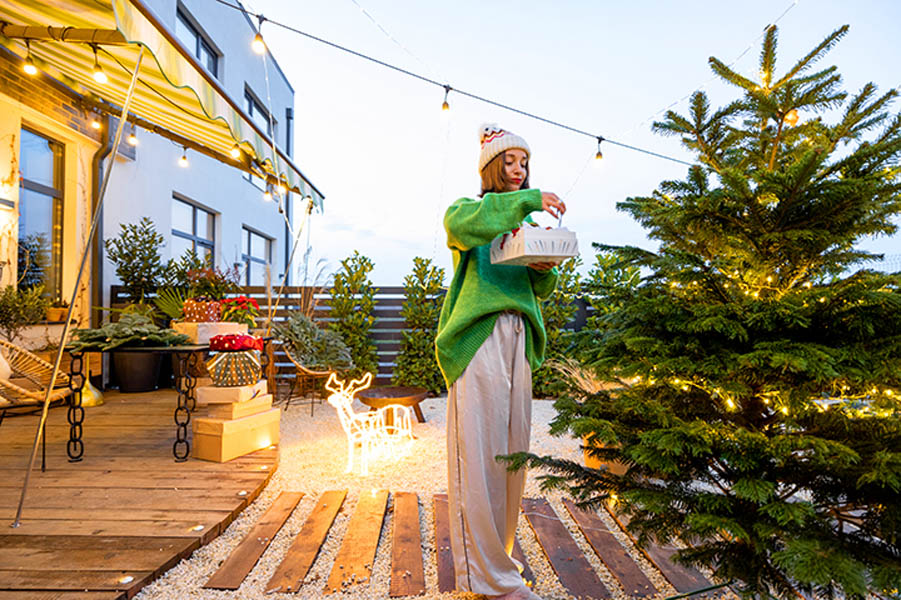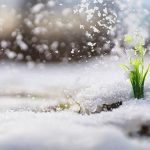Winter strips the land down to its raw form. No lush greenery, no cascading flowers, no buzzing energy of summer. What’s left? Shape. Contrast. Silence. But silence doesn’t have to mean dull. A winter garden, when done right, can be breathtaking—crisp, sculptural, alive in a way that’s entirely its own.
Let Evergreens Anchor the Space
When all else fades, evergreens hold steady. They stand tall, defiant against the cold, adding depth and texture when the rest of the garden takes its winter nap. A lone pine dusted in snow becomes a monument to resilience. A row of junipers, deep green against the white, creates structure where everything else has gone bare.
Some of the best evergreens for winter landscapes include:
- Holly – Deep green, glossy leaves with bright red berries that pop in the cold.
- Boxwood – Compact and sculptural, perfect for hedges or potted displays.
- Spruce – Tall and stately, its branches hold snow beautifully.
- Juniper – Hardy, low-maintenance, and rich in color all year round.
Evergreens provide a sense of permanence, a backbone for the garden when everything else is asleep.
Think in Textures, Not Just Colors
Winter is about form, not flowers. It’s about the whisper of wind through dried grasses, the spindly elegance of bare branches, the way frost clings to seed heads like crystal lace. A snow-covered hydrangea bloom looks like it was sculpted from ice. Feather reed grass, golden and delicate, sways in the cold air, catching the light like spun silk. Even a gnarled oak branch, stripped of its leaves, becomes a living work of art when backlit by the winter sun.
To create a landscape that remains visually engaging, even in the dead of winter, mix:
- Ornamental grasses like feather reed grass, which stand tall and move with the wind.
- Shrubs with interesting bark such as red twig dogwood, adding striking contrast.
- Perennials that hold their shape like sedum, echinacea, and dried hydrangeas.
A winter garden isn’t just about surviving—it’s about thriving in an entirely different way.
Surprise the Eye with Unexpected Color
Winter’s color palette leans toward whites, grays, and browns. Which means any burst of color hits like a revelation. Red twig dogwood electrifies the space with fiery stems. Golden sedge glows against the snow, a warm ember in the cold. Even the deep blue berries of juniper, though small, break the monotony with surprising vibrance.
Man-made elements work too. A cobalt blue birdhouse. A rusted iron sculpture, its patina deepening in the frost. A bright red bench, half-buried in snow, waiting for someone brave enough to sit.
Snow and Ice – The Unexpected Artists
Snow isn’t just something to shovel. It redraws the landscape, highlighting details often overlooked. A light dusting clings to branches, accentuating their shapes. A heavy snowfall smooths out imperfections, turning rough edges into soft curves. It’s a natural highlighter, a sculptor, a veil of quiet beauty.
Then there’s ice—unpredictable, a little dangerous, but mesmerizing. A frozen birdbath, icicles dangling from eaves, the shimmer of a thin ice sheet over a pond. It’s chaos turned elegant.
Light the Night, Change the Mood
Short days don’t mean the beauty disappears at sundown. They just shift the spotlight to lighting. String lights woven through bare branches bring a quiet warmth. Soft pathway lights guide the eye through the snow. Uplighting beneath evergreens turns them into towering shadows, mysterious and dramatic.
Winter Beauty Is Subtle, but Striking
A winter landscape doesn’t scream for attention. It doesn’t demand bursts of color or lush, overflowing growth. Its beauty is quieter, more deliberate. It’s in the way snow transforms ordinary branches into sculptures, in the way frost outlines every detail, in the unexpected glow of golden grass against a sea of white.
Winter isn’t the absence of life—it’s life in a different form. A season of stillness, of contrast, of careful design. When embraced, it creates a landscape that is every bit as captivating as spring in bloom or summer in full swing. The trick is learning to see its beauty, not for what’s missing, but for what remains.



